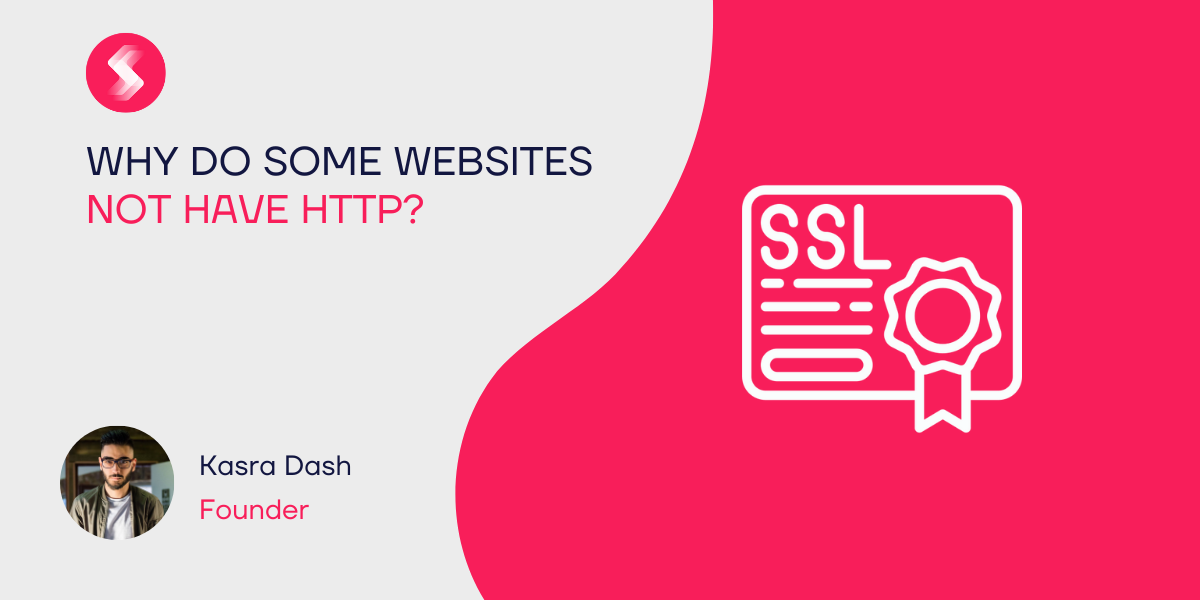HTTP, or Hypertext Transfer Protocol, is a common sight in web browsers everywhere. HTTP helps web browsers to understand the data that is being delivered to them by servers. Without HTTP, we wouldn’t expect such communication to exist – we’d not be able to browse the web.
But, there has been growing confusion over HTTP’s relevance in today’s online world. Many people have noticed that HTTPS has replaced the traditional prefix. Many of us, too, aren’t sure quite what the difference is between HTTP and WWW.
In this guide, we’ll break it all down for you. We’ll explain why some websites are breaking free from HTTP. We’ll also explore what that means for you, both as a site owner and as an internet user.
What is WWW?
Let’s, first of all, establish what WWW is. It’s important to understand that WWW is a completely different entity to HTTP! WWW, or World Wide Web, is all the data, and all the users, available online. HTTP works with WWW to translate this data, such as links, media and other users. So that web browsers can access them and display them.
Your web browser may vary, but they will all generally do the same thing. Some of the most popular include Google Chrome, Mozilla Firefox and iOS Safari. While they are all different in various ways, they all work to translate WWW data via HTTP in seconds.
What is the Difference Between HTTP and HTTPS?
While HTTP has long been the standard for data translation. Times have changed, and the need for greater security has emerged. HTTP sites, as developed, and de-encrypted. This means that outside forces may intercept its data, and it could also mean that people can see the data that you’re sharing through the site.
You may still see HTTP sites here and there; but, HTTPS has become the standard. In a day and age where so many of us are concerned about online privacy, it makes sense that the websites we visit should be protecting our interests. Yet, not all sites are so quick to adopt HTTPS. It may not seem crucial to some web developers; but, people are getting wise to HTTPS being the secure standard.
With an HTTP site, your data is not secure, and you may be at risk of attack, or data loss. With HTTPS, the data and requests you send are encrypted, and can only be seen by you and the website in question.
Secure and Non Secure Sites
People are quick to split HTTP and HTTPS websites into ‘secure’ and ‘non-secure’ categories. This is somewhat accurate; but, web security runs a bit deeper than that.
- HTTPS sites are encrypted, which means your data is safe at the base level.
- Yet, you will still need to check that a site has up-to-date security certificates. These will help to thwart any would-be attackers.
- Do also make sure you are using a router and a browser which protect you. Browsing without a firewall or virus and malware protection is never recommended.
- You may also wish to set up a VPN if you want your web activity to be completely anonymous. All your browsing activity will be tied to an IP address based on your device and location, otherwise.
For website owners, the choice is clear. Failure to adopt HTTPS in today will put you further behind the competition. Is it worth the risk?
Google Chrome and HTTP
Google is, of course, at the heart of the internet. Web developers have spent years devising strategies on how to climb their search rankings. The brand is, however, also known for its passion for giving searchers the best experience possible while browsing online. One of Google’s most recent pushes was to upgrade the Chrome browser to ‘name and shame’ HTTP sites. With the latest Chrome versions, you will now be given a small ‘not secure’ label next to sites which refuse to use HTTPS. Previously, you would have had to click on the label to learn more. Branding HTTP sites’ not secure’ may seem a little over the top. However, it will likely help to encourage site owners and developers to move to encrypt their websites. Web searchers are more likely to visit sites which are ‘secure’, than those which aren’t. This is especially the case if they are looking at sensitive data, such as finances. You will be hard-pressed to find any banks online now without HTTPS as standard.
Does WWW Affect SEO?
Now we’ve explored HTTP and HTTPS in a little detail, let’s come back to WWW. While it’s recommended you leave HTTP behind for the sake of your visitors, what about WWW? Where does this prefix come in? Are things really as complicated as they seem? Not at all. You may find that WWW doesn’t always appear in web addresses or URLs. If you run your own website, you may be concerned as to whether or not the presence of WWW in your address might affect how you’re seen online. Search Engine Optimisation, or SEO, is a series of guidelines web developers follow to make sure sites are given the best chances to be found by relevant searches. Ultimately, either having or not having WWW won’t affect your SEO. However, it’s recommended that you choose one approach or the other. You actually don’t need WWW at all given modern web browser technology. Browsers are already smart enough to recognise websites and generally won’t need these flags to pick up on what they need to translate.
Should I Be Using HTTPS?
The answer to this question should be fairly obvious. To be able to present a secure, enjoyable experience to all your visitors, you should be doing everything you can to protect them. This doesn’t just mean making sure your security certificates are up to date. Unfortunately, you can’t rely on how secure your visitors will actually be, either. Sometimes, there will be a little bit of hand-holding. However, you can help your visitors to help themselves with HTTPS. Moving from HTTP to HTTPS makes sense from a business perspective. Google is actively flagging sites which do not use the secure protocol. With millions of people using Chrome each day, failure to switch is going to be detrimental for your online success. You could be avoiding millions of regular visitors without even realising it. Therefore, while you don’t have to understand everything about HTTP and HTTPS, it is always recommended that you take the safe option. Think about your own browsing preferences. Will an HTTP URL make you want to click ‘back’? What if the data you send and receive through these sites could be intercepted? You’ll probably agree that continuing to browse is really not going to be worth the risk. Many websites are dropping HTTP. However, this is a good thing. Google’s push to roll as many sites as possible onto HTTPS is protecting people online. If you haven’t already made the leap, it’s time to do so. An experienced, talented web developer will always be able to show you how!

